ABCEUM Acquisitions

Today, the museum is made from what was once its marginalia. Comprised mainly of spaces that are not the galleries themselves, it has inflated its operations and stretched its parameters, respondent to social and economic pressures alike. In the 24/7 culture of presentness, it has become a museum on demand – a non-stop institution, with culture on tap. It has extended its operations, not as some post-structuralist performance of undoing of the white cube, but rather because those notionally peripheral operations, those added extras, are the site of customised service, transmission and knowledge production: they are a site of mass intellectuality where the museum connects to and participates in the domineering logic of the network and the new spirit of Capitalism. Total knowledge is unthinkable but sought after endlessly. The museum on demand supplies a labour that cannot, does not, stop.
So are galleries not now the edges, the periphery? Does the museum not fill its schedules with events and workshops every week, producing more hours of content than any artwork is visible for? Does it not panic to be seen to be busy, to be accessed, walked into and over? Is it not providing services as content, entertainment as culture? Has it not catalogued every available option for us, so that we can watch back each talk on cue, colour in our own masterpieces, and print our chosen posters as we want them, when we want them? The museum is a factory, to be sure: it is a factory specializing in an atomising cult of the personalised: allowing us to send personal messages from built in museum webcams makes this clear.
It is important to consider alternative and collective models of the museum. Now that the regular institution has returned to the condition of a pre-copernican entity, revolving around the atomised participant, it is left to a renewed idea of collectivity - which has occasionally been called a commonwealth – to re-orient and anchor us in a critical relationship to the past, present and imagined future.
There are two types of self-made institution. One is grandiose, grandstanding and delusional: it aspires to some kind of greatness that comes about only by historical privilege and right, or otherwise by sheer capital. It is the result of networking, incessant chatter, and bought in credibility. Its benefactor’s name is above the door. Aspiring to imitate a high-minded seriousness, it delegates its decision making to the trend-setting and those who can wash their hands of the many familiar ethical contradictions that their resources are tethered to. The other, by contrast, can begin on a shoestring: it starts with a proposition, some posturing, and a little provocation. It might sometimes barely resemble a museum at all, just carry its name as a sign. It might take on its structural logic, and rapidly anoint itself, come out of the blue. It might also have a figurehead: a Marcel Broodthaers, with his obsessions for exotic plants, packing crates and eagles; a King Ubu or Rufus T. Firefly, getting on with the busy job of being full of power and force, silly ceremony and public testament. It employs multiple Jane Castletons to give public tours. Where it assumes the logics of the mighty institution it does so parodically – it knows that comedy is a Trojan horse. It will imitate the foibles and epic distortions that are enacted upon edifices where ‘neutrality’ and ‘historic narration’ have long been considered values, but it will also, in turn, propose alternatives, and new possibilities. And it will do so through collectivity and cooperation.
The possibility of the museum on demand is only beginning to be explored through a return to collectivity. Cooperation is no longer geographically determined: it may function remotely, and use its span as a strength. It need not be immediately materialized, but exist in discourse, and be composed of fragments. It is dispersed but communicative, it exists in multiple formats.
The Abceum feels the shift from (mass) production to (mass) customization through the significance of print and production on demand. It reconsiders the museum, just as it re-orients the scales of production away from the twin poles of the scarce and the many. The Abceum has co-opted the marginal spaces of the institution, to turn them in on themselves. It chooses the major and the minor, the tangible and the virtual. Each book is a space, investigating what the museum has become. They are imagined and imaginary sites of production, reception, and cooperation.
Duncan Wooldridge, 2014
DOWNLOAD PRESS KIT


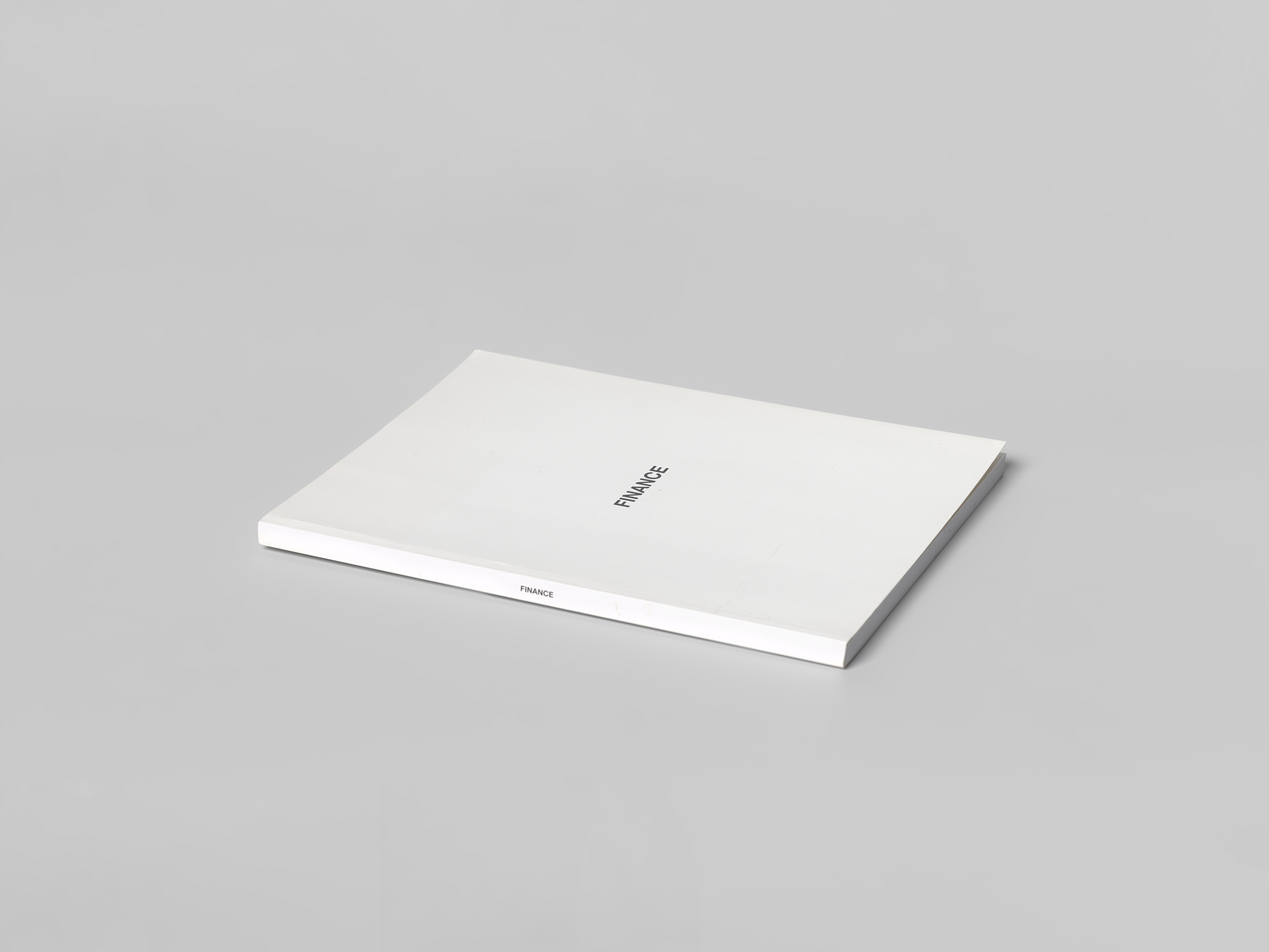
FINANCE
Mishka Henner
(British, 1976 — present)
Tax Return forms sent to the Department of the Treasury Internal Revenue Service by MoMA between 2009-2011.
Date: 2014
Illustrated paperback book with 193 b&w page scans
Binding: Perfect bound
Pages: 196
Dimensions: 10.9” x 8.5”
Accession Number: 2014.001.001
Mishka Henner
(British, 1976 — present)
Tax Return forms sent to the Department of the Treasury Internal Revenue Service by MoMA between 2009-2011.
Date: 2014
Illustrated paperback book with 193 b&w page scans
Binding: Perfect bound
Pages: 196
Dimensions: 10.9” x 8.5”
Accession Number: 2014.001.001



MARKETING
Mishka Henner
(British, 1976 — present)
Design guidelines for all ABCEUM marketing and promotional materials, including information on logo use, fonts, poster, signage, leaflets and stationary layouts.
Date: 2014
Medium: Illustrated document with colour illustrations and text
Binding: Metallic wire bound
Pages: 26
Dimensions: 11.7” x 8.5”
Accession Number: 2014.001.002
Mishka Henner
(British, 1976 — present)
Design guidelines for all ABCEUM marketing and promotional materials, including information on logo use, fonts, poster, signage, leaflets and stationary layouts.
Date: 2014
Medium: Illustrated document with colour illustrations and text
Binding: Metallic wire bound
Pages: 26
Dimensions: 11.7” x 8.5”
Accession Number: 2014.001.002




PAINT
Travis Shaffer
(American, 1983 — present)
Sample kit and necessary instructions for the production and use of Blanc de Chaux.
Date: 2014
Medium: Broadsheet with illustration, text, and inserts
Binding: Folded
Pages: 1 (folded)
Dimensions: 10” x 8”
Accession Number: 2014.001.003
Travis Shaffer
(American, 1983 — present)
Sample kit and necessary instructions for the production and use of Blanc de Chaux.
Date: 2014
Medium: Broadsheet with illustration, text, and inserts
Binding: Folded
Pages: 1 (folded)
Dimensions: 10” x 8”
Accession Number: 2014.001.003




MEZZANINE
Andreas Schmidt
(German, 1967 — present)
Exhibition catalogue for Andreas Schmidt’s Unique Artist Books series MMXIV, first shown on the Mezzanine level of the ABCEUM in 2014.
Date: 2014
Medium: Illustrated hardback book with dust jacket
Binding: Side sewn
Pages: 208
Dimensions: 12” x 12”
Accession Number: 2014.001.004
Andreas Schmidt
(German, 1967 — present)
Exhibition catalogue for Andreas Schmidt’s Unique Artist Books series MMXIV, first shown on the Mezzanine level of the ABCEUM in 2014.
Date: 2014
Medium: Illustrated hardback book with dust jacket
Binding: Side sewn
Pages: 208
Dimensions: 12” x 12”
Accession Number: 2014.001.004

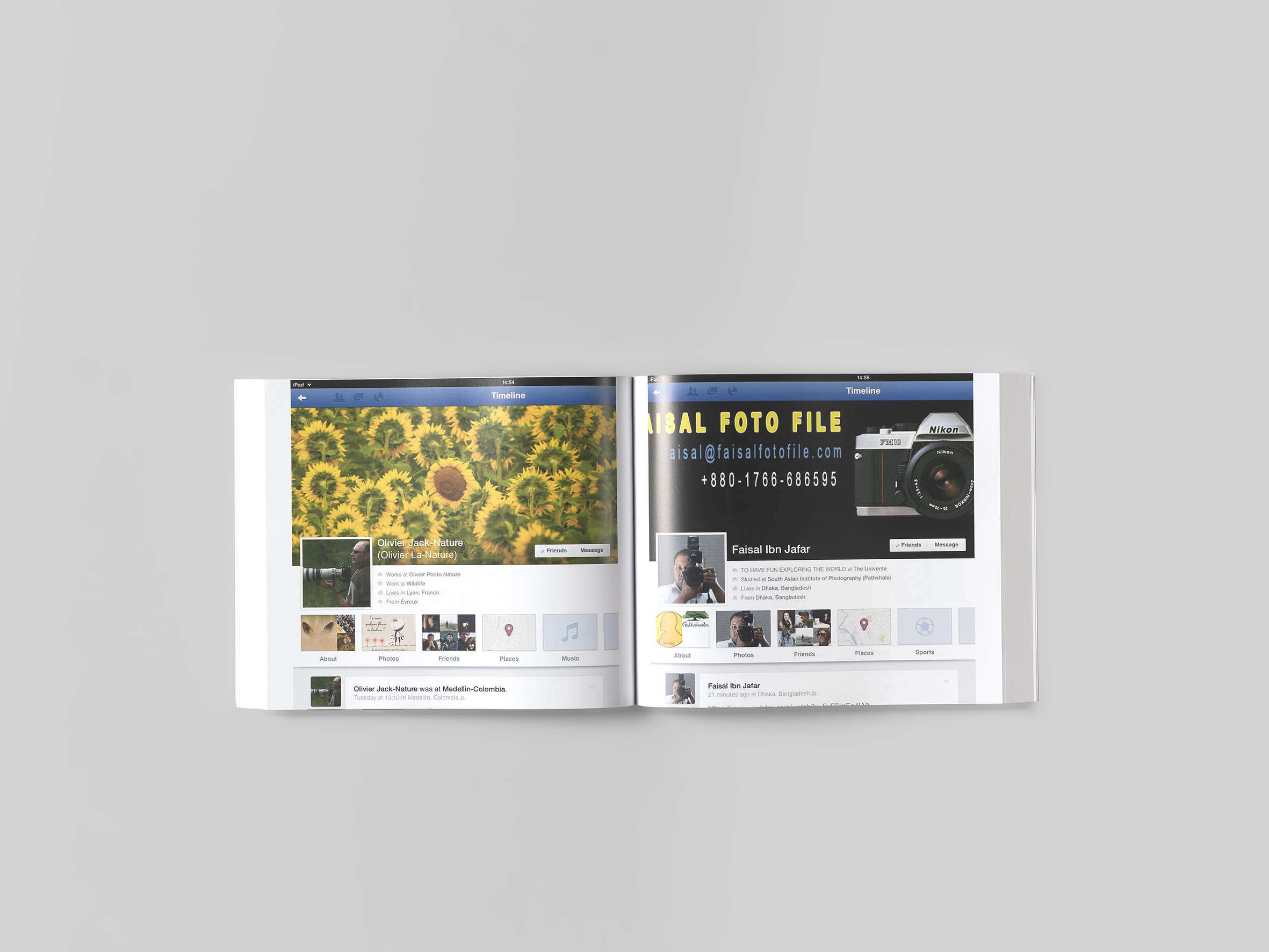
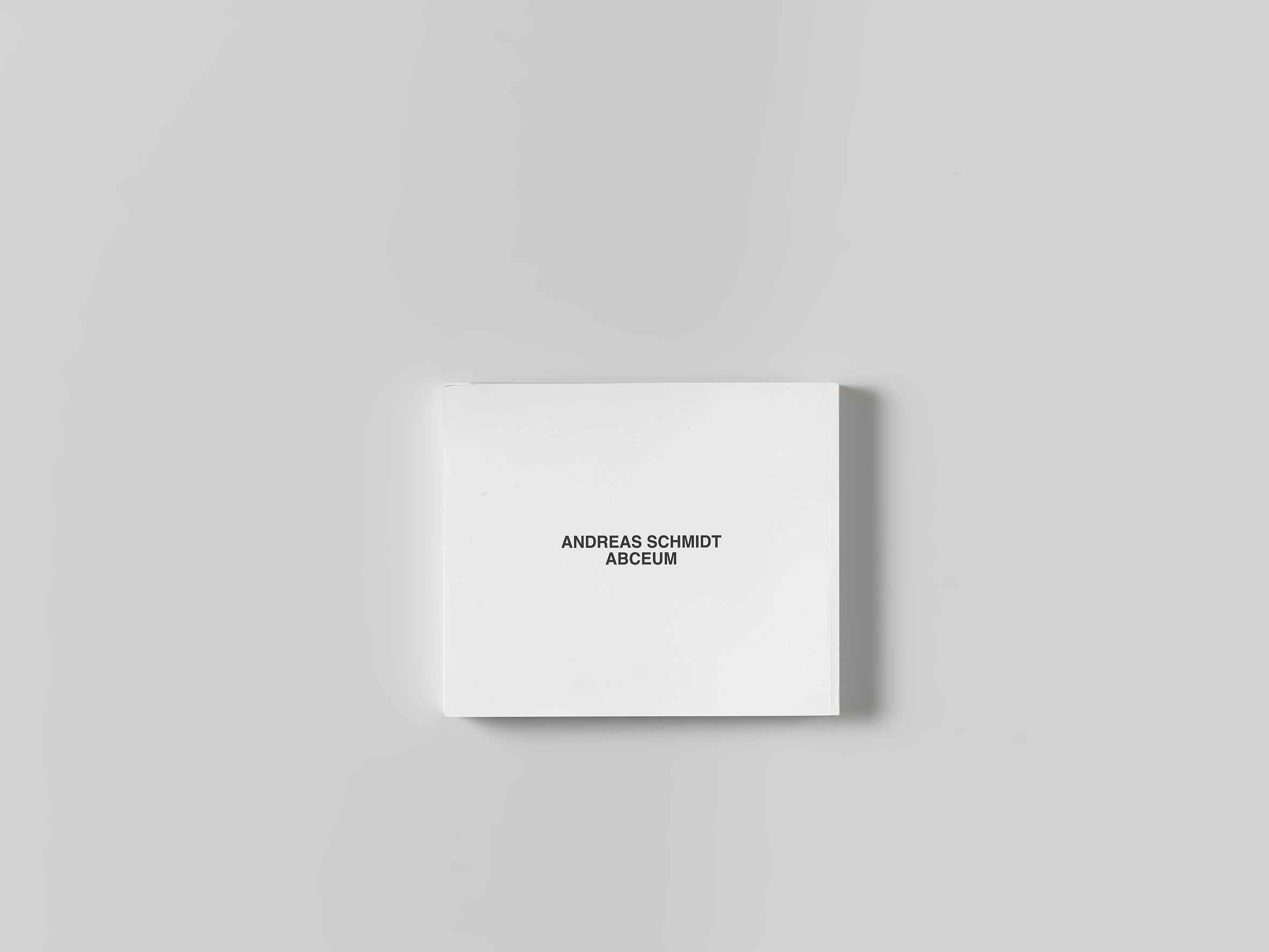

HUMAN RESOURCES I
Andreas Schmidt
(German, 1967 — present)
Featuring IPad Mini screenshots of the Facebook profile pages of all of Andreas Schmidt’s Facebook friends who represented themselves with a camera on Facebook, June 13, 2014.
Date: 2014
Medium: Illustrated hardback book
Binding: Side sewn
Pages: 440
Dimensions: 8.3” x 9.8”
Accession Number: 2014.001.005
(German, 1967 — present)
Featuring IPad Mini screenshots of the Facebook profile pages of all of Andreas Schmidt’s Facebook friends who represented themselves with a camera on Facebook, June 13, 2014.
Date: 2014
Medium: Illustrated hardback book
Binding: Side sewn
Pages: 440
Dimensions: 8.3” x 9.8”
Accession Number: 2014.001.005




HUMAN RESOURCES II
Andreas Schmidt
(German, 1967 — present)
Featuring IPad Mini screenshots of the Facebook profile image of all of Andreas Schmidt’s Facebook friends who represented themselves with a camera on Facebook, June 13, 2014.
Date: 2014
Medium: Illustrated hardback book
Binding: Side sewn
Pages: 440
Dimensions: 8.3” x 9.8”
Accession Number: 2014.001.006
(German, 1967 — present)
Featuring IPad Mini screenshots of the Facebook profile image of all of Andreas Schmidt’s Facebook friends who represented themselves with a camera on Facebook, June 13, 2014.
Date: 2014
Medium: Illustrated hardback book
Binding: Side sewn
Pages: 440
Dimensions: 8.3” x 9.8”
Accession Number: 2014.001.006




NEW MEDIA
Paul Soulellis
(US, 1968 — present)
The first 420 videos posted to YouTube by Webdriver Torso.
Date: 2014
Medium: newsprint publication
Binding: loose folio Pages: 32
Dimensions: 10.4” x 15”
Accession Number: 2014.001.007
Paul Soulellis
(US, 1968 — present)
The first 420 videos posted to YouTube by Webdriver Torso.
Date: 2014
Medium: newsprint publication
Binding: loose folio Pages: 32
Dimensions: 10.4” x 15”
Accession Number: 2014.001.007

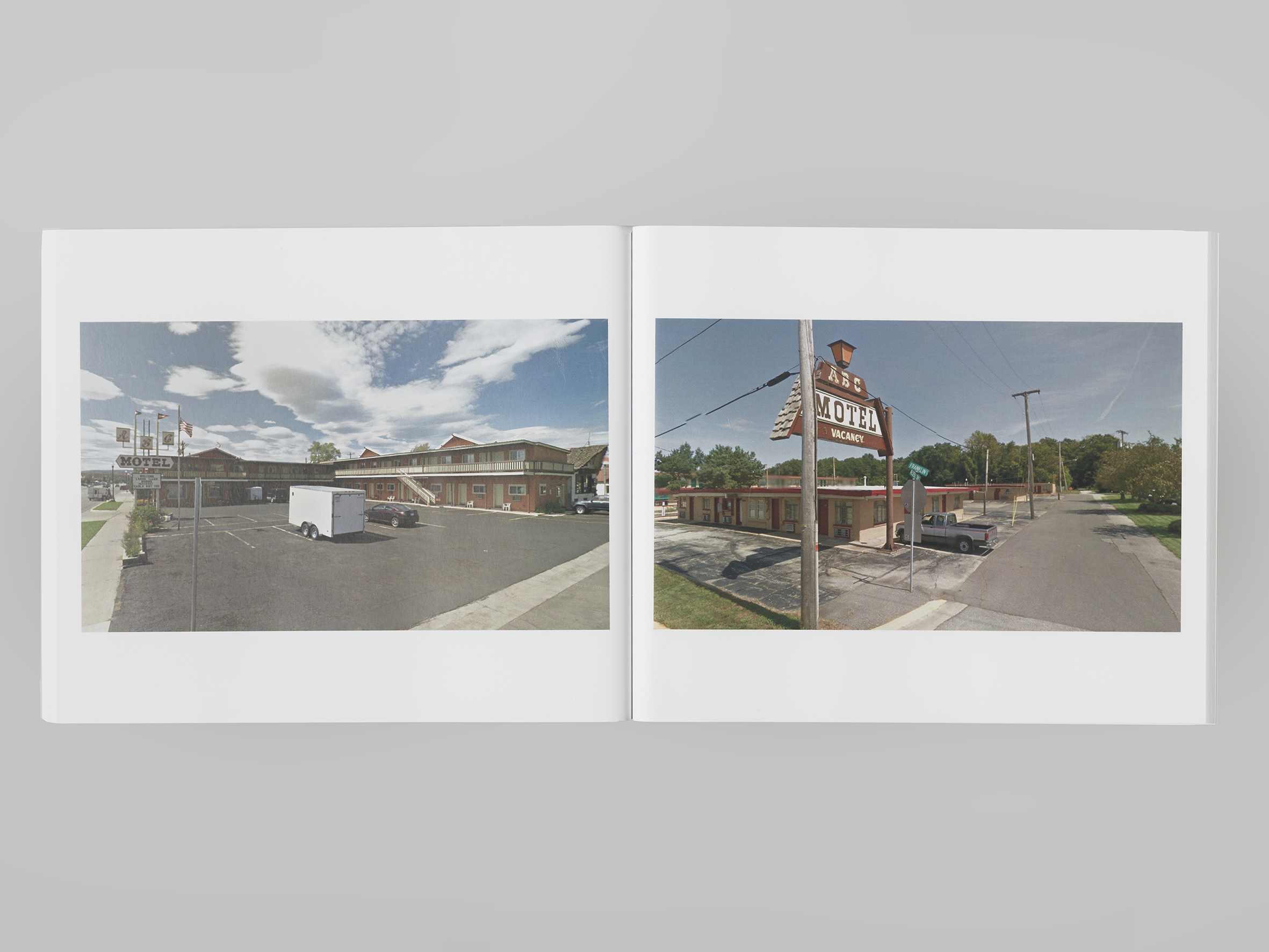
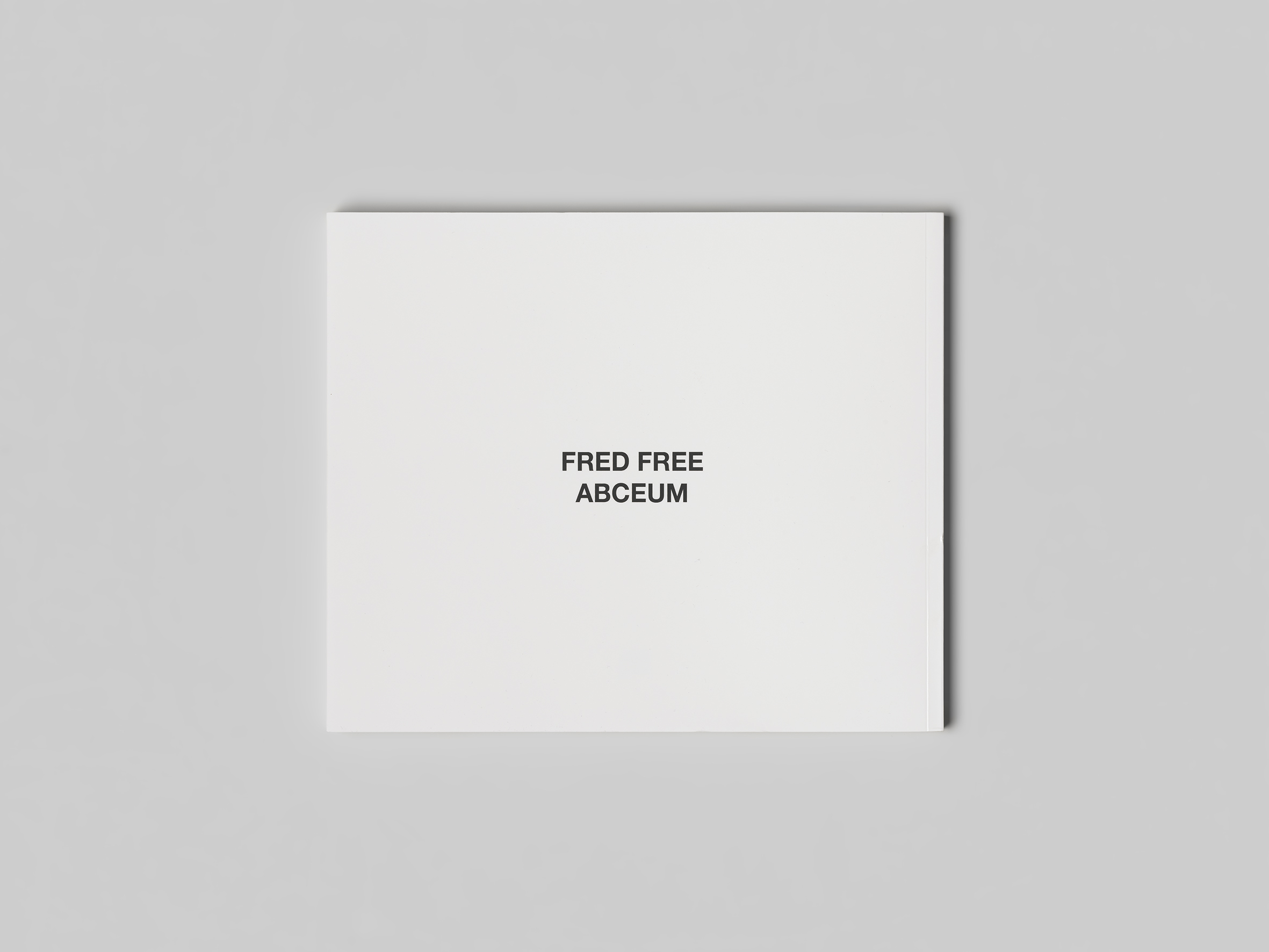

CORPORATE PARTNERS PROGRAM Fred Free
(US, 1962 — present)
Documents the first 126 businesses targeted as potential financial, material and/or spiritual supporters of the ABCEUM.
Date: 2014
Medium: Paperback book with 126 color screen shots
Binding: Perfect bound
Pages: 130
Dimensions: 8” x 9.5”
Accession Number: 2014.001.008
(US, 1962 — present)
Documents the first 126 businesses targeted as potential financial, material and/or spiritual supporters of the ABCEUM.
Date: 2014
Medium: Paperback book with 126 color screen shots
Binding: Perfect bound
Pages: 130
Dimensions: 8” x 9.5”
Accession Number: 2014.001.008



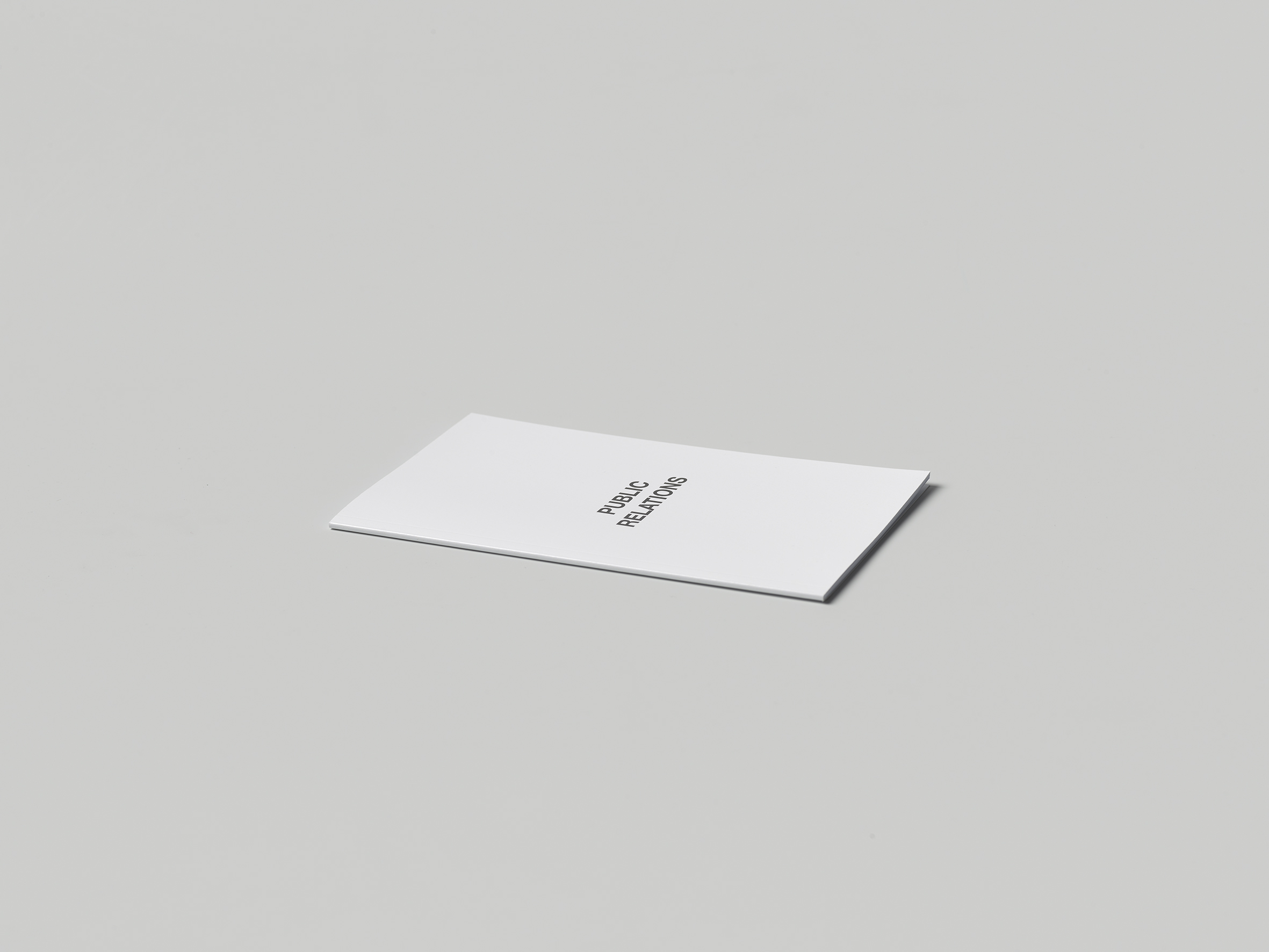
PUBLIC RELATIONS
Fred Free
(US, 1962 — present)
Documents every comment left by the viewing public regarding an artists’ book on display at an online gallery since 2006.
Date: 2014
Medium: Text-only paperback book
Binding: Perfect bound
Pages: 24
Dimensions: 8” x 5”
Accession Number: 2014.001.009
Fred Free
(US, 1962 — present)
Documents every comment left by the viewing public regarding an artists’ book on display at an online gallery since 2006.
Date: 2014
Medium: Text-only paperback book
Binding: Perfect bound
Pages: 24
Dimensions: 8” x 5”
Accession Number: 2014.001.009




MAILROOM
Mocksim
(British, 1974 — present)
One-hundred Point of Delivery Signature images collected from courier company parcel tracking systems during 2012 and 2013.
Date: 2014
Medium: Black and white book
Binding: Hardcover (dust-jacket)
Pages: 104
Dimensions: 9.3” x 6.3”
Accession Number: 2014.001.010
Mocksim
(British, 1974 — present)
One-hundred Point of Delivery Signature images collected from courier company parcel tracking systems during 2012 and 2013.
Date: 2014
Medium: Black and white book
Binding: Hardcover (dust-jacket)
Pages: 104
Dimensions: 9.3” x 6.3”
Accession Number: 2014.001.010




STOREROOM
Tanja Lažetić
(Slovenian, 1967 — present)
A readymade; One book of eight volumes of the 1955 to 1971 Encyclopedia of Yugoslavia, wrapped in a white cover.
Date: 2014
Medium: Readymade
Binding: Perfect bound
Pages: 716 (Volume 2)
Dimensions: 11.7” x 8.9”
Accession Number: 2014.001.011
Tanja Lažetić
(Slovenian, 1967 — present)
A readymade; One book of eight volumes of the 1955 to 1971 Encyclopedia of Yugoslavia, wrapped in a white cover.
Date: 2014
Medium: Readymade
Binding: Perfect bound
Pages: 716 (Volume 2)
Dimensions: 11.7” x 8.9”
Accession Number: 2014.001.011




CAFE (I Dolci di Amici delgi Uffizi)
Erik Benjamins
(US, 1986 — present)
A fold-out poster in Italian of eight drawings of pastries from various Florentine museum cafes.
Date: 2014
Medium: Newsprint poster
Binding: Four-fold, unbound
Pages: 1
Dimensions: 14.8” x 10.4”
Accession Number: 2014.001.012
Erik Benjamins
(US, 1986 — present)
A fold-out poster in Italian of eight drawings of pastries from various Florentine museum cafes.
Date: 2014
Medium: Newsprint poster
Binding: Four-fold, unbound
Pages: 1
Dimensions: 14.8” x 10.4”
Accession Number: 2014.001.012



SHOP
Jonathan Lewis
(British, 1970 — present)
Illustrating the pop song, The Model, by the German electronic music band Kraftwerk with photographs of various incarnations of the Mona Lisa.
Date: 2014
Medium: Illustrated paperback book
Binding: Perfect bound
Pages: 26
Dimensions: 9.8” x 7.8”
Accession Number: 2014.001.013
Jonathan Lewis
(British, 1970 — present)
Illustrating the pop song, The Model, by the German electronic music band Kraftwerk with photographs of various incarnations of the Mona Lisa.
Date: 2014
Medium: Illustrated paperback book
Binding: Perfect bound
Pages: 26
Dimensions: 9.8” x 7.8”
Accession Number: 2014.001.013




LOST AND FOUND
Louis Porter
(British, 1977 — present)
A collection of posters generated by a website allowing individuals to upload images and a short text describing last known whereabouts of missing pets and belongings.
Date: 2014
Medium: Illustrated paperback book with 121 colour illustrations
Binding: Perfect bound
Pages: 126
Dimensions: 9.5” x 7.6”
Accession Number: 2014.001.014
Louis Porter
(British, 1977 — present)
A collection of posters generated by a website allowing individuals to upload images and a short text describing last known whereabouts of missing pets and belongings.
Date: 2014
Medium: Illustrated paperback book with 121 colour illustrations
Binding: Perfect bound
Pages: 126
Dimensions: 9.5” x 7.6”
Accession Number: 2014.001.014



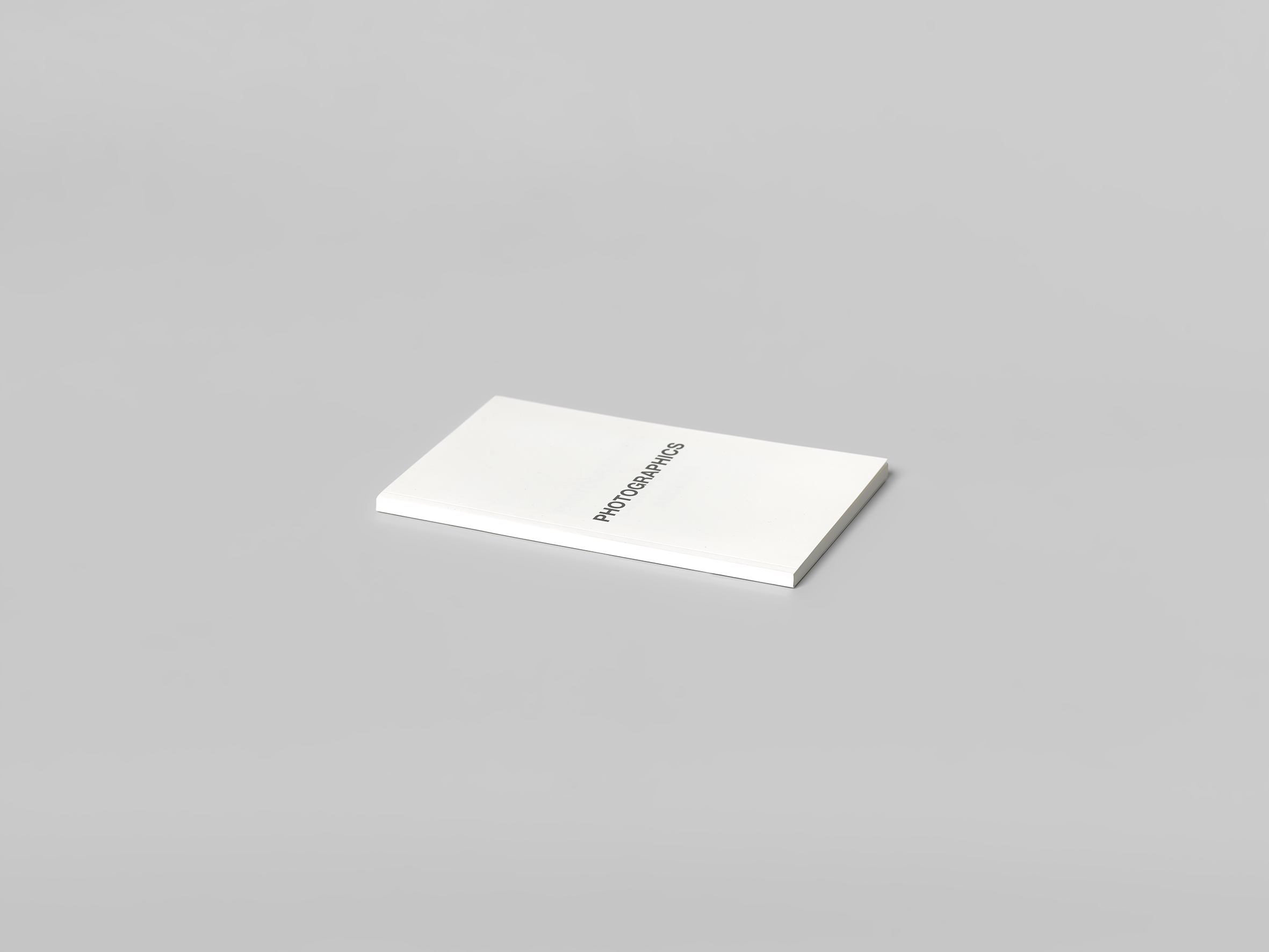
PHOTOGRAPHICS
Louis Porter
(British, 1977 — present)
Illustrations taken from early photographic manuals.
Date: 2014
Medium: Illustrated paperback book with 99 black and white illustrations
Binding: Perfect bound
Pages: 102
Dimensions: 8” x 5”.
Accession Number: 2014.001.015
Louis Porter
(British, 1977 — present)
Illustrations taken from early photographic manuals.
Date: 2014
Medium: Illustrated paperback book with 99 black and white illustrations
Binding: Perfect bound
Pages: 102
Dimensions: 8” x 5”.
Accession Number: 2014.001.015


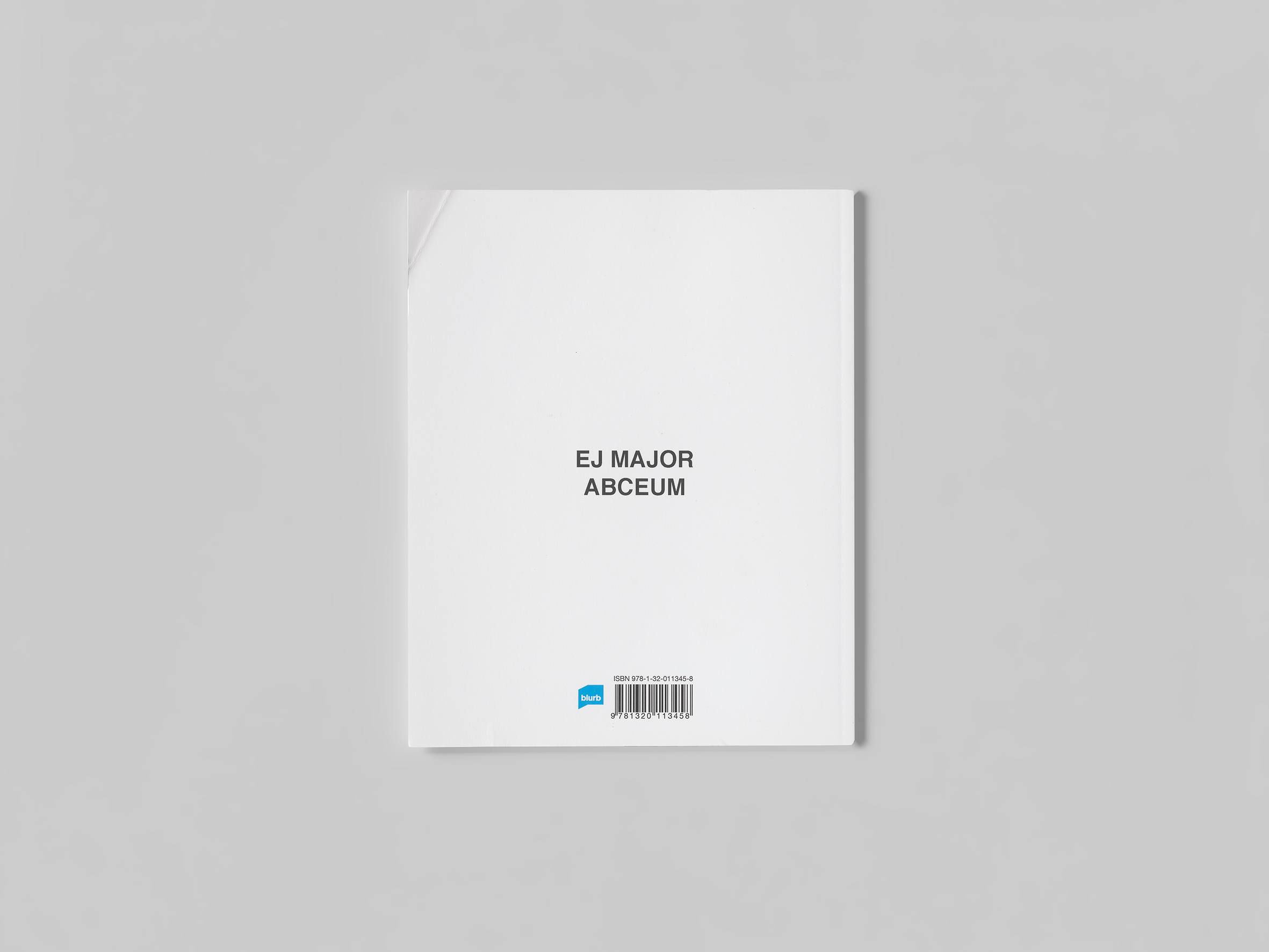
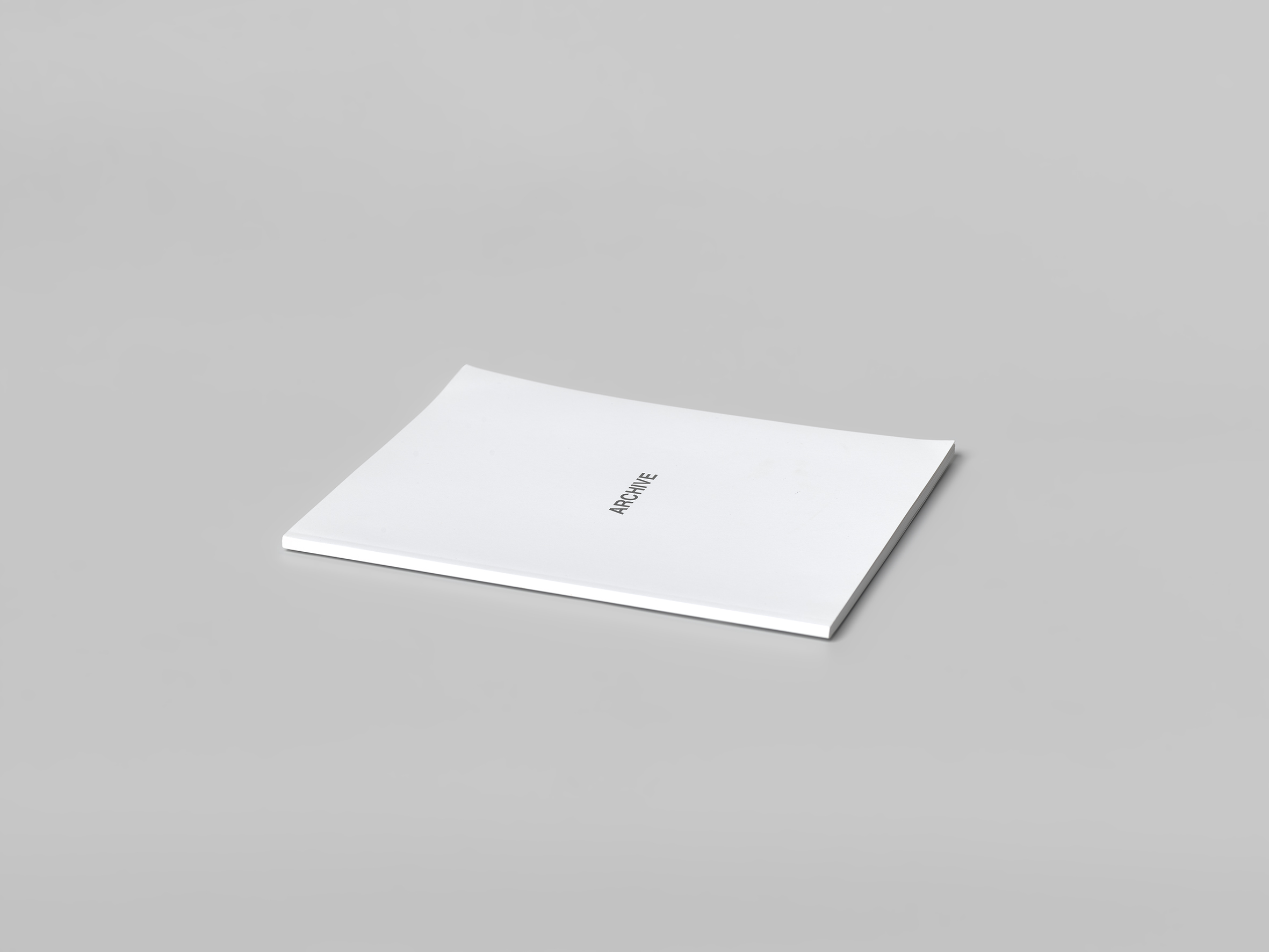
ARCHIVE
EJ Major
(British, 1971 — present)
Pictures and newspaper cuttings from the early 1900s relating to the struggle for women’s Suffrage.
Date: 2014
Medium: Illustrated paperback book
Binding: Perfect bound
Pages: 66
Dimensions: 10” x 8”.
Accession Number: 2014.001.016
EJ Major
(British, 1971 — present)
Pictures and newspaper cuttings from the early 1900s relating to the struggle for women’s Suffrage.
Date: 2014
Medium: Illustrated paperback book
Binding: Perfect bound
Pages: 66
Dimensions: 10” x 8”.
Accession Number: 2014.001.016




COMMUNICATIONS
Eric Doeringer
(American, 1974 — present)
Over 600 variations of the phrase “i am not still alive, on kawara”, inspired by the works of On Kawara, Sol LeWitt, and by Kawara’s death earlier this year.
Date: 2014
Medium: Paperback book
Binding: Perfect bound
Pages: 620
Dimensions: 8.5” x 8.5”.
Accession Number: 2014.001.017
Eric Doeringer
(American, 1974 — present)
Over 600 variations of the phrase “i am not still alive, on kawara”, inspired by the works of On Kawara, Sol LeWitt, and by Kawara’s death earlier this year.
Date: 2014
Medium: Paperback book
Binding: Perfect bound
Pages: 620
Dimensions: 8.5” x 8.5”.
Accession Number: 2014.001.017

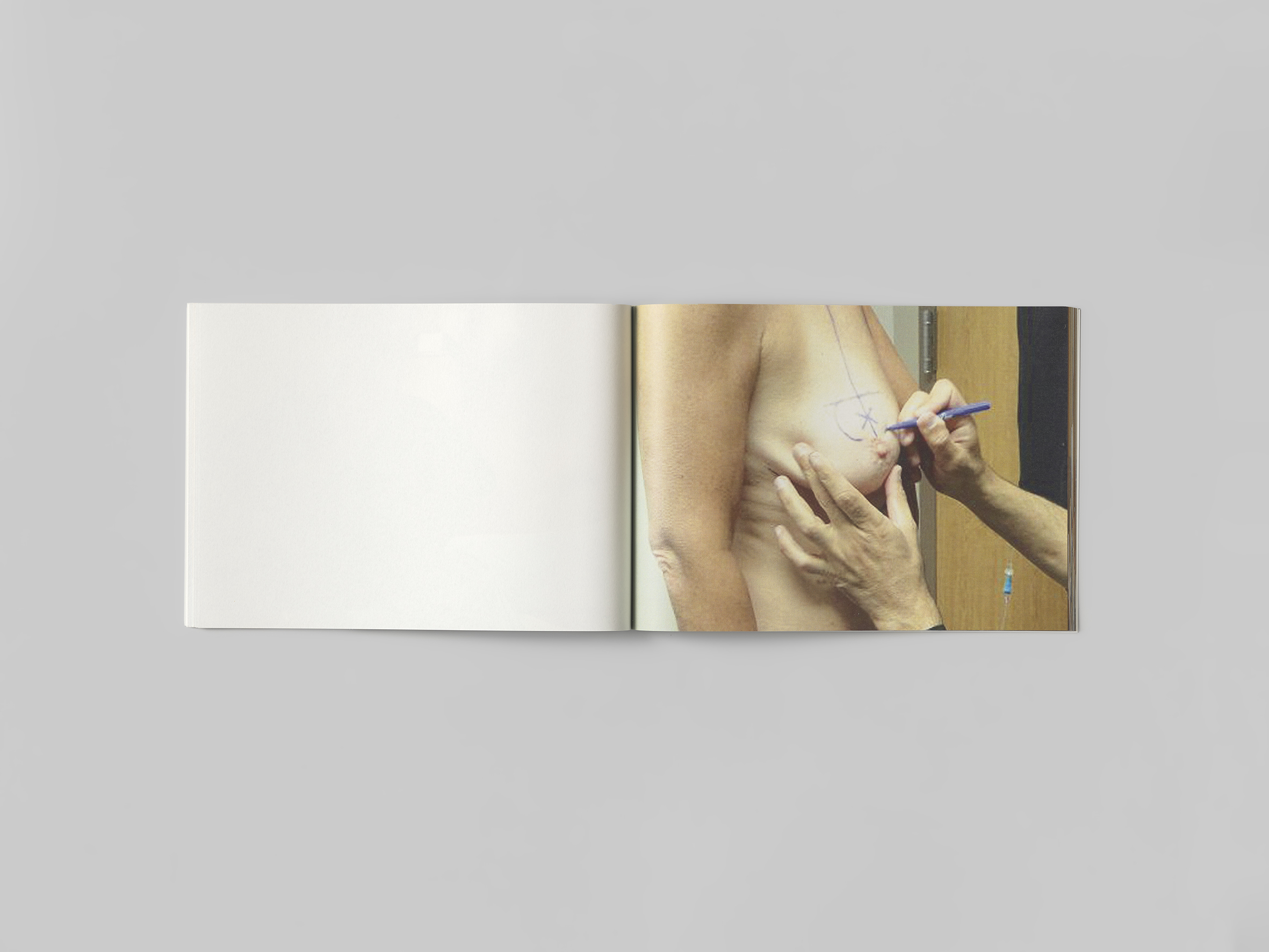


BOARDROOM
Wil van Iersel
(Dutch, 1965 — present)
Presenting thirty-nine color pictures found on the internet. Imagining the global discussion about the place of culture in today’s society.
Date: 2014
Medium: Illustrated paperback book with 39 colour illustrations
Binding: Perfect bound
Pages: 88
Dimensions: 5.8” x 8.3”
Accession Number: 2014.001.018
Wil van Iersel
(Dutch, 1965 — present)
Presenting thirty-nine color pictures found on the internet. Imagining the global discussion about the place of culture in today’s society.
Date: 2014
Medium: Illustrated paperback book with 39 colour illustrations
Binding: Perfect bound
Pages: 88
Dimensions: 5.8” x 8.3”
Accession Number: 2014.001.018




SCULPTURE GARDEN
Duncan Wooldridge
(British, 1981 — present)
Public works of art as reproduced and rendered into three dimensions by Apple’s mapping software.
Date: 2014
Medium: Illustrated Paperback Book
Binding: Perfect Bound
Pages: 92
Dimensions: 6.6” x 6.7”
Accession Number: 2014.001.019
Duncan Wooldridge
(British, 1981 — present)
Public works of art as reproduced and rendered into three dimensions by Apple’s mapping software.
Date: 2014
Medium: Illustrated Paperback Book
Binding: Perfect Bound
Pages: 92
Dimensions: 6.6” x 6.7”
Accession Number: 2014.001.019
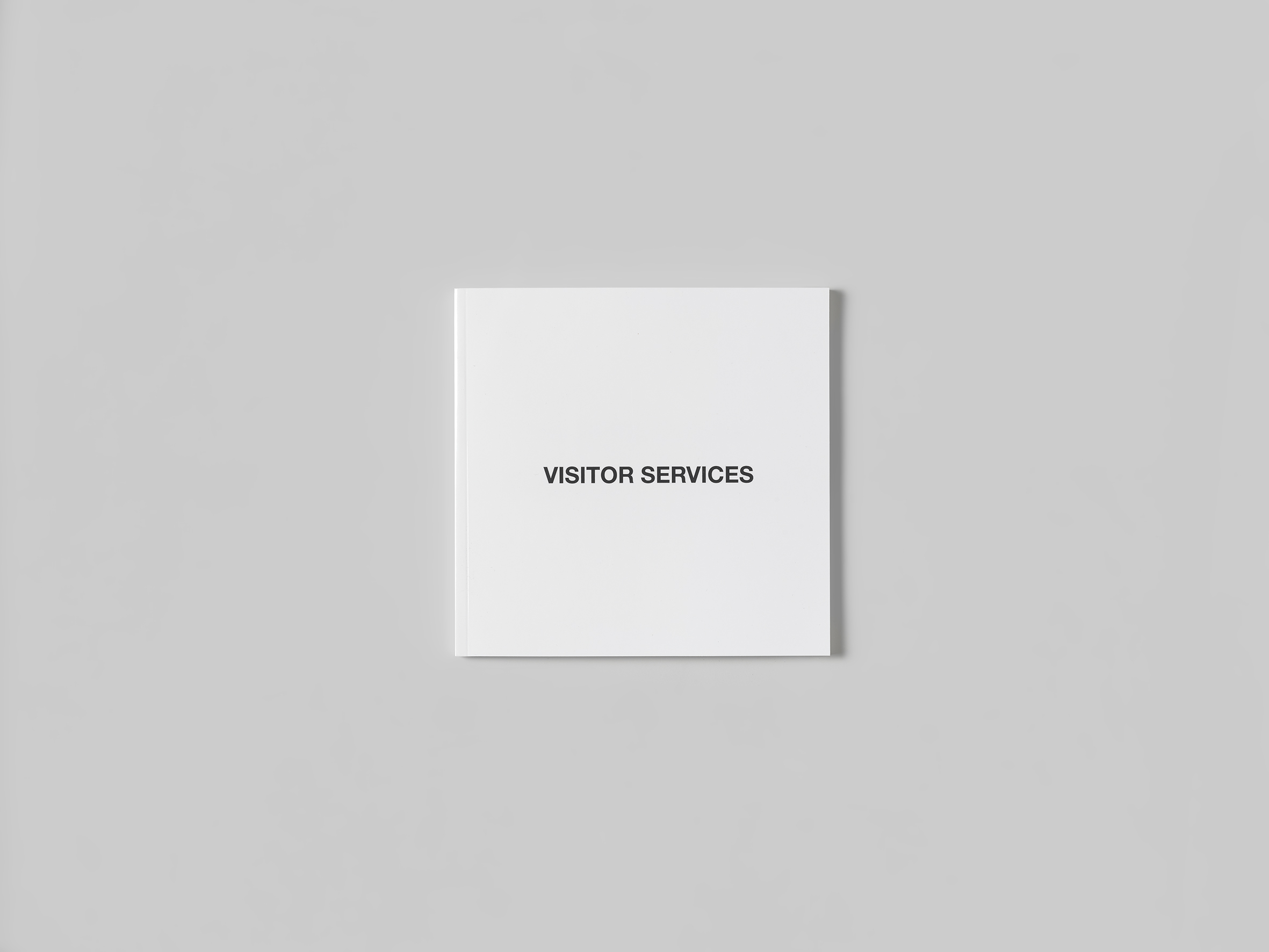



VISITOR SERVICES
Duncan Wooldridge
(British, 1981 — present)
From the social media pages of LACMA entitled LACMA + You, showing a visitors imitating the poses of works and objects in and around the museum.
Date: 2014
Medium: Paperback book
Binding: Perfect bound
Pages: 38
Dimensions: 6.6” x 6.7”
Accession Number: 2014.001.020
Duncan Wooldridge
(British, 1981 — present)
From the social media pages of LACMA entitled LACMA + You, showing a visitors imitating the poses of works and objects in and around the museum.
Date: 2014
Medium: Paperback book
Binding: Perfect bound
Pages: 38
Dimensions: 6.6” x 6.7”
Accession Number: 2014.001.020
WALLS
Hermann Zschiegner
(Austrian, 1971 — present)
A participatory project bringing together fifty artists that took photos of an empty wall in close proximity to a work of art they feel connected to.
Date: 2014
Medium: Paperback book
Binding: Perfect bound
Pages: 100
Dimensions: 9” x 6”
Accession Number: 2014.001.021
Hermann Zschiegner
(Austrian, 1971 — present)
A participatory project bringing together fifty artists that took photos of an empty wall in close proximity to a work of art they feel connected to.
Date: 2014
Medium: Paperback book
Binding: Perfect bound
Pages: 100
Dimensions: 9” x 6”
Accession Number: 2014.001.021




GRASS, GRAVEL AND PAVING
Oliver Griffin
(British, 1983 — present)
Presents a guide to the exterior flooring materials of several well known museums.
Date: 2014
Medium: Paperback book
Binding: Perfect bound
Pages: 34
Dimensions: 8.3” x 5.2”
Accession Number: 2014.001.022
Oliver Griffin
(British, 1983 — present)
Presents a guide to the exterior flooring materials of several well known museums.
Date: 2014
Medium: Paperback book
Binding: Perfect bound
Pages: 34
Dimensions: 8.3” x 5.2”
Accession Number: 2014.001.022




CLOSED DEPARTMENT
Jonathan Schmidt-Ott
(German, xxx — present)
Date: ?
Medium: Paperback book
Binding: Perfect bound
Pages: ?
Dimensions: ?
Accession Number: 2014.001.023
Jonathan Schmidt-Ott
(German, xxx — present)
Date: ?
Medium: Paperback book
Binding: Perfect bound
Pages: ?
Dimensions: ?
Accession Number: 2014.001.023




PRESERVATION
Claudia de la Torre
(Spanish)
“Pages displayed in open volumes may be overlaid with facsimiles to protect the opening from light exposure. When facsimiles cannot be used, consider rotating items on exhibit or turning the pages on a regular schedule. Although exhibiting a volume closed instead of open is less stressful to the book, remember that most book cover materials will be damaged by long-term light exposure. Therefore, even closed volumes should be shown for limited periods of time with low light levels.” Extract from Guidelines on exhibiting Archival Materials, published by the International Council on Archives.
Date: 2022
Medium: Paperback book
Binding: Perfect bound
Pages: 800
Dimensions: 5.83" x 8.27" (14.8 x 21 cm)
Accession Number: 2022.002.023
Claudia de la Torre
(Spanish)
“Pages displayed in open volumes may be overlaid with facsimiles to protect the opening from light exposure. When facsimiles cannot be used, consider rotating items on exhibit or turning the pages on a regular schedule. Although exhibiting a volume closed instead of open is less stressful to the book, remember that most book cover materials will be damaged by long-term light exposure. Therefore, even closed volumes should be shown for limited periods of time with low light levels.” Extract from Guidelines on exhibiting Archival Materials, published by the International Council on Archives.
Date: 2022
Medium: Paperback book
Binding: Perfect bound
Pages: 800
Dimensions: 5.83" x 8.27" (14.8 x 21 cm)
Accession Number: 2022.002.023




JANITOR'S CLOSET
David Schulz
(American)
The performative, pictorial, and plastic experiences of a janitor in the context of a contemporary art historical timeline.
Date: 2022
Medium: Paperback book
Binding: Perfect bound
Pages: 4
Dimensions: 5.83" x 8.27" (14.8 x 21 cm)
Accession Number: 2022.002.024
David Schulz
(American)
The performative, pictorial, and plastic experiences of a janitor in the context of a contemporary art historical timeline.
Date: 2022
Medium: Paperback book
Binding: Perfect bound
Pages: 4
Dimensions: 5.83" x 8.27" (14.8 x 21 cm)
Accession Number: 2022.002.024




SOUVENIR
George Grace Gibson
(British)
George Gibson joined our project and all we got was this lousy penny!
Date: 2022
Medium: Paperback book
Binding: Perfect bound
Pages: 116
Dimensions: 10.6 x 17.2 cm
Accession Number: 2022.002.025
George Grace Gibson
(British)
George Gibson joined our project and all we got was this lousy penny!
Date: 2022
Medium: Paperback book
Binding: Perfect bound
Pages: 116
Dimensions: 10.6 x 17.2 cm
Accession Number: 2022.002.025




ARCHIVAL PROVENANCE AUTHENTIFICATION SECTION
Arnaud Desjardins
(French)
Facsimile of a bootleg edition of the press material from the Section des Figures (Figure Section) iteration of Marcel Broodthaers’ Musée D'Art Moderne, Departement des Aigles.
Date: 2019
Medium: Paperback book
Binding: Perfect bound
Pages: 62
Dimensions: 8.27" x 11.69" ( 21 x 29.7 cm)
Accession Number: 2022.002.026
Arnaud Desjardins
(French)
Facsimile of a bootleg edition of the press material from the Section des Figures (Figure Section) iteration of Marcel Broodthaers’ Musée D'Art Moderne, Departement des Aigles.
Date: 2019
Medium: Paperback book
Binding: Perfect bound
Pages: 62
Dimensions: 8.27" x 11.69" ( 21 x 29.7 cm)
Accession Number: 2022.002.026




BOOKKEEPING
Rahel Zoller
(German)
llustrations taken from the Catalogue of the Library Bureau, Boston 1891.
Date: 2022
Medium: Paperback book
Binding: Perfect bound
Pages: 20
Dimensions: 5.83" x 8.27" ( 14.8 x 21 cm)
Accession Number: 2022.002.027
Rahel Zoller
(German)
llustrations taken from the Catalogue of the Library Bureau, Boston 1891.
Date: 2022
Medium: Paperback book
Binding: Perfect bound
Pages: 20
Dimensions: 5.83" x 8.27" ( 14.8 x 21 cm)
Accession Number: 2022.002.027